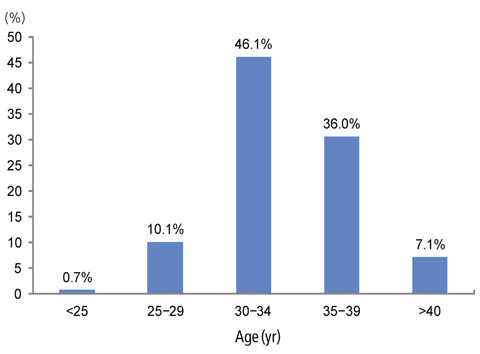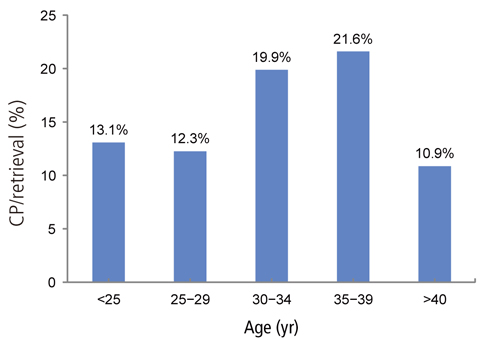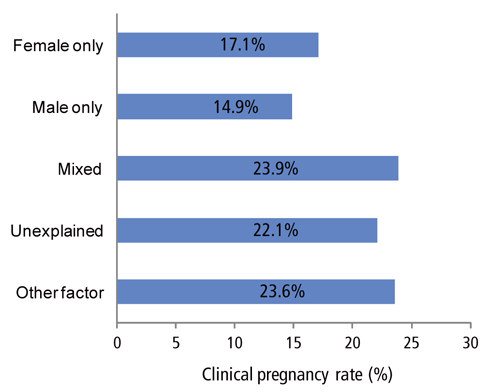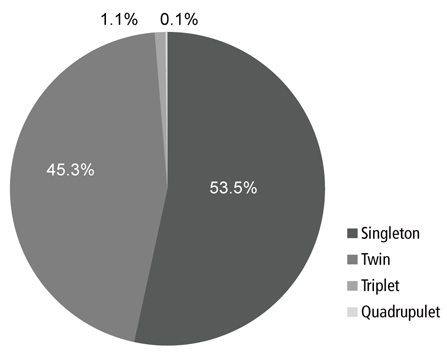Obstet Gynecol Sci.
2013 Nov;56(6):353-361. 10.5468/ogs.2013.56.6.353.
Current status of assisted reproductive technology in Korea, 2009
- Affiliations
-
- 1Department of Obstetrics and Gynecology, Seoul National University College of Medicine, Seoul, Korea. ymchoi@snu.ac.kr
- 2Department of Obstetrics and Gynecology, Kyungpook National University School of Medicine, Daegu, Korea.
- 3Department of Obstetrics and Gynecology, Yonsei University College of Medicine, Seoul, Korea.
- 4Department of Obstetrics and Gynecology, Hanyang University College of Medicine, Seoul, Korea.
- 5Department of Obstetrics and Gynecology, Ajou University School of Medicine, Suwon, Korea.
- 6Department of Obstetrics and Gynecology, Cheil General Hospital, Kwandong University College of Medicine, Seoul, Korea.
- 7Gwangju Mirae & Heemang Obstetrics and Gynecology Clinic, Gwangju, Korea.
- 8Hamchoon Women's Clinic, Seoul, Korea.
- 9Department of Obstetrics and Gynecology, Korea University College of Medicine, Seoul, Korea.
- 10Mirae & Heemang Obstetrics and Gynecology Clinic, Seoul, Korea.
- 11Maria Fertility Hospital, Seoul, Korea.
- 12Department of Obstetrics and Gynecology, Keimyung University School of Medicine, Daegu, Korea.
- 13Department of Obstetrics and Gynecology, Pusan National University School of Medicine, Yangsan, Korea.
- 14Bucheon Seoul Women's Hospital, Bucheon, Korea.
- 15Department of Obstetrics and Gynecology, Chung-Ang University College of Medicine, Seoul, Korea.
- 16Mudeung Mountain Eco Hospital, Damyang, Korea.
- 17Good Moonhwa Hospital, Busan, Korea.
- 18Mizmedi Hospital, Seoul, Korea.
- 19Department of Obstetrics and Gynecology, CHA University College of Medicine, Pocheon, Korea.
- KMID: 1500368
- DOI: http://doi.org/10.5468/ogs.2013.56.6.353
Abstract
- Great advances have been made in the field of assisted reproductive technology (ART) since the first in vitro fertilization (IVF) baby was born in Korea in the year of 1985. However, it deserve to say that the invaluable data from fertility centers may serve as a useful source to find out which factors affect successful IVF outcome and to offer applicable information to infertile patients and fertility clinics. This article intended to report the status of ART in 2009 Korean Society of Obstetrics and Gynecology surveyed. The current survey was performed to assess the status and success rate of ART performed in Korea, between January 1 and December 31, 2009. Reporting forms had been sent out to IVF centers via e-mail, and collected by e-mail as well in 2012. With International Committee Monitoring Assisted Reproductive Technologies recommendation, intracytoplasmic sperm injection (ICSI) and non-ICSI cases have been categorized and also IVF-ET cases involving frozen embryo replacement have been surveyed separately. Seventy-four centers have reported the treatment cycles initiated in the year of 2009, and had performed a total of 27,947 cycles of ART treatments. Among a total of 27,947 treatment cycles, IVF and ICSI cases added up to 22,049 (78.9%), with 45.3% IVF without ICSI and 54.7% IVF with ICSI, respectively. Among the IVF and ICSI patients, patients confirmed to have achieved clinical pregnancy was 28.8% per cycle with oocyte retrieval, and 30.9% per cycle with embryo transfer. The most common number of embryos transferred in 2009 is three embryos (40.4%), followed by 2 embryos (28.4%) and a single embryo transferred (13.6%). Among IVF and ICSI cycles that resulted in multiple live births, twin pregnancy rate was 45.3% and triple pregnancy rate was 1.1%. A total of 191 cases of oocyte donation had been performed to result in 25.0% of live birth rate. Meanwhile, a total of 5,619 cases of frozen embryo replacement had been performed with 33.7% of clinical pregnancy rate per cycle with embryo transfer. When comparing with international registry data, clinical pregnancy rate per transfer from fresh IVF cycles including ICSI (34.1%,) was comparable to clinical pregnancy rate per transfer in European Society for Human Reproduction and Embryology report was 32.5% though lower than 45.0% for USA data. There was no remarkable difference in status of assisted reproductive technology in Korea between the current report and the data reported in 2008. The age of women trying to get pregnant was reconfirmed to be the most important factor that may have impact on success of ART treatment.
Keyword
MeSH Terms
Figure
Cited by 3 articles
-
How much have the perinatal outcomes of triplet pregnancies improved over the last two decades?
Kyu-Sang Kyeong, Jae-Yoon Shim, Soo-young Oh, Hye-Sung Won, Pil Ryang Lee, Ahm Kim, Sung-Cheol Yun, Pureun-Narae Kang, Suk-Joo Choi, Cheong-Rae Roh
Obstet Gynecol Sci. 2019;62(4):224-232. doi: 10.5468/ogs.2019.62.4.224.Perinatal Outcomes of Pregnancy with Assisted Reproductive Technology
JoonHo Lee
Korean J Perinatol. 2015;26(2):114-119. doi: 10.14734/kjp.2015.26.2.114.Perinatal Outcomes of
In Vitro Fertilization Versus Natural Pregnancy in Very Low Birth Weight Infants
Kyung Suk Baek, Sol Han, Og Hyang Kim, , Ju Sun Heo, Jihyun Jeon
Perinatology. 2019;30(2):66-70. doi: 10.14734/PN.2019.30.2.66.
Reference
-
1. ART committee, Korean Society of Obstetrics and Gynecology. Current status of assisted reproductive technology in Korea, 2006. Korean J Obstet Gynecol. 2009; 52:1212–1238.2. Centers for Disease Control and Prevention, American Society for Reproductive Medicine, Society for Assisted Reproductive Technology. 2009 Assisted reproductive technology success rates: national summary and fertility clinic reports. Atlanta: U.S. Department of Health and Human Services;2011.3. Ferraretti AP, Goossens V, de Mouzon J, Bhattacharya S, Castilla JA, Korsak V, et al. Assisted reproductive technology in Europe, 2008: results generated from European registers by ESHRE. Hum Reprod. 2012; 27:2571–2584.
- Full Text Links
- Actions
-
Cited
- CITED
-
- Close
- Share
- Similar articles
-
- Current status of assisted reproductive technology in Korea, 2007
- Current status of assisted reproductive technology in Korea, 2006
- Current Status of Assisted Reproductive Technology in Korea, 1999
- Current Status of Assisted Reproductive Technology in Korea, 2000
- Current status of assisted reproductive technology in Korea, 2008








